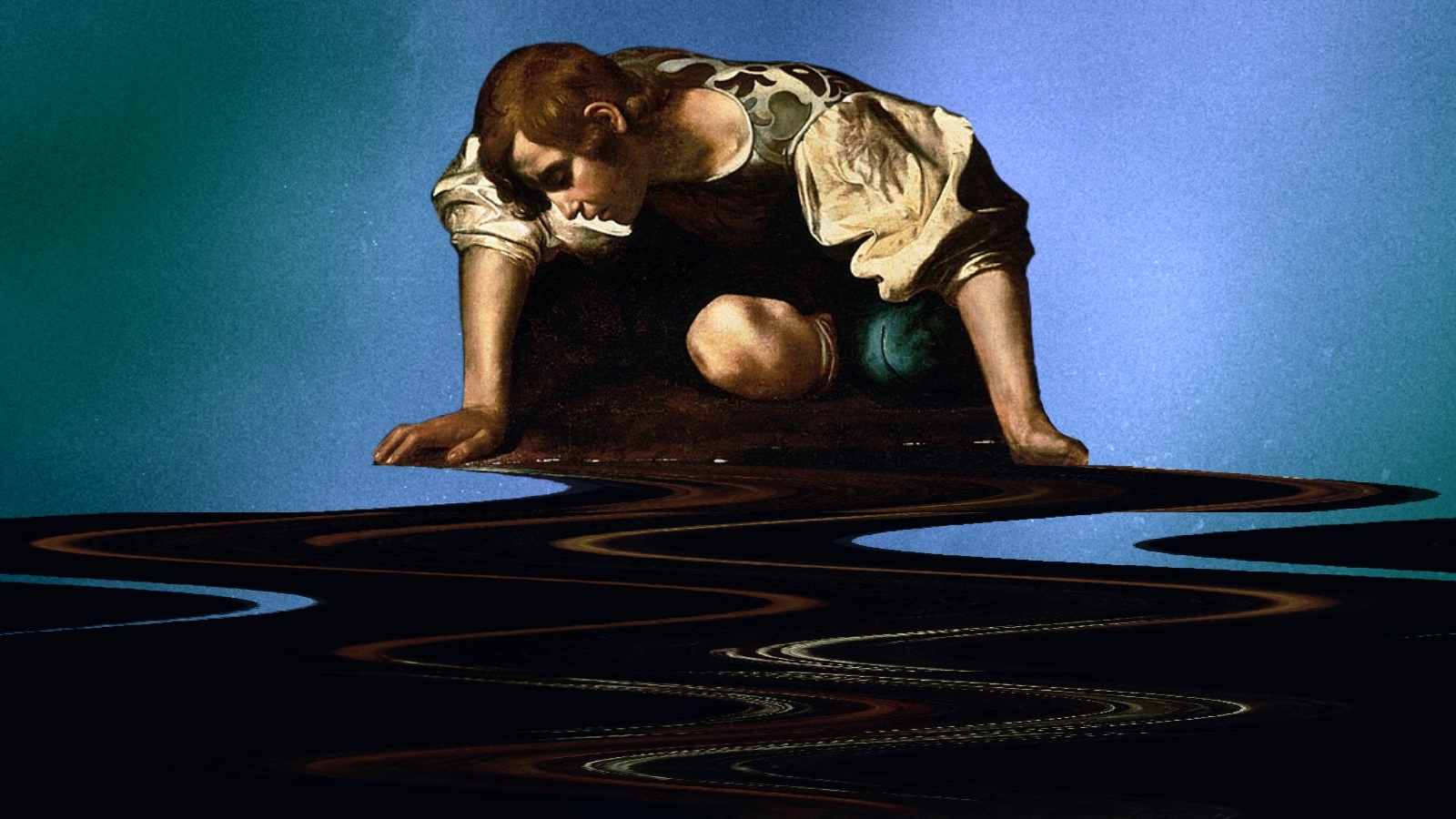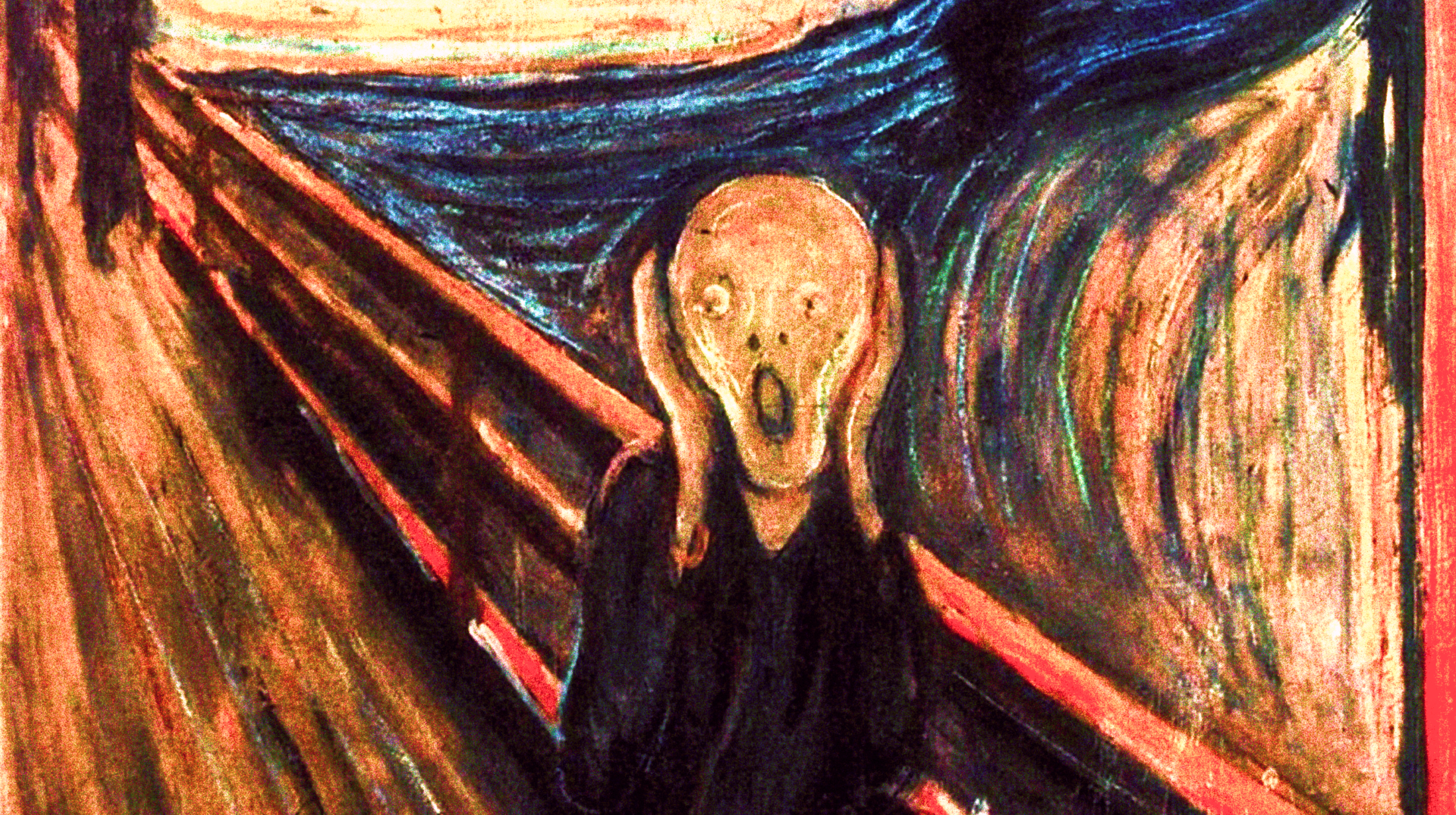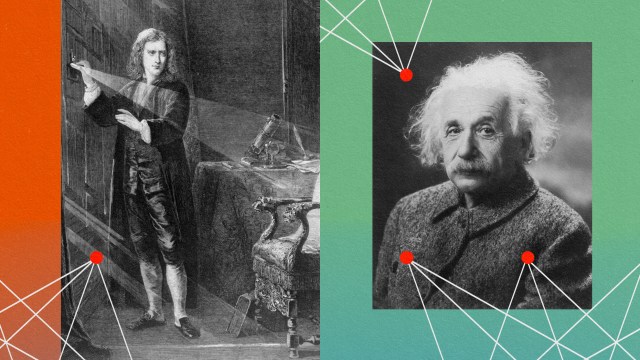Eastern philosophy says there is no “self.” Science agrees

- Western philosophy typically conceptualizes the self as a stable, controlling entity, comparable to a pilot, while Eastern philosophies such as Buddhism argue that the self is an illusion, a byproduct of our thought processes.
- Modern neuroscience provides evidence that aligns with the Eastern view, revealing that the left hemisphere of the brain constantly creates narratives to interpret reality, leading to a mistaken identification with these self-narratives.
- This false sense of self, which is often equated with the incessant internal dialogue, contributes significantly to human mental suffering.
The brain-powered individual, which is variously called the self, the ego, the mind, or “me,” lies at the center of Western thought. In the worldview of the West, we herald the greatest thinkers as world-changers. There is no more concise example of this than philosopher René Descartes’ famous statement, “Cogito, ergo sum,” or, “I think, therefore I am.” But who is this? Let’s take a closer look at the thinker, or the “me,” we all take for granted.
Western view: The self is a pilot
This “I” is for most of us the first thing that pops into our minds when we think about who we are. The “I” represents the idea of our individual self, the one that sits between the ears and behind the eyes and is “piloting” the body. The “pilot” is in charge, it doesn’t change very much, and it feels to us like the thing that brings our thoughts and feelings to life. It observes, makes decisions, and carries out actions — just like the pilot of an airplane.
This I/ego is what we think of as our true selves, and this individual self is the experiencer and the controller of things like thoughts, feelings, and actions. The pilot self feels like it is running the show. It is stable and continuous. It is also in control of our physical body; for example, this self understands that it is “my body.” But unlike our physical body, it does not perceive itself as changing, ending (except, perhaps for atheists, in bodily death), or being influenced by anything other than itself.
Eastern view: The self is an illusion
Now let’s turn to the East. Buddhism, Taoism, the Advaita Vedanta school of Hinduism, and other schools of Eastern thought have quite a different take on the self, the ego, or “me.” They say that this idea of “me” is a fiction, although a very convincing one. Buddhism has a word for this concept — anatta, which is often translated as “no self” — which is one of the most fundamental tenets of Buddhism, if not the most important.
This idea sounds radical, even nonsensical, to those who are trained in Western traditions. It seems to contradict our everyday experience, indeed our whole sense of being. But in Buddhism and other schools of Eastern thought, the concept of the self is seen as the result of the thinking mind. The thinking mind reinvents the self from moment to moment such that it in no way resembles the stable coherent self most believe it to be.
Put another way, it is the process of thinking that creates the self, rather than there being a self having any independent existence separate from thought. The self is more like a verb than a noun. To take it a step further, the implication is that without thought, the self does not, in fact, exist. In the same way that walking only exists while one is walking, the self only exists while there are thoughts about it. As a neuropsychologist, I can say that in my view, science is just now catching up with what Buddhist, Taoist, and Advaita Vedanta Hinduism have been teaching for over 2,500 years.
There is no “self center” in the brain
The great success story of neuroscience has been in mapping the brain. We can point to the language center, the face processing center, and the center for understanding the emotions of others. Practically every function of the mind has been mapped to the brain with one important exception: the self. Perhaps this is because these other functions are stable and consistent, whereas the story of the self is hopelessly inventive with far less stability than is assumed.
While various neuroscientists have made the claim that the self resides in this or that neural location, there is no real agreement among the scientific community about where to find it — not even whether it might be in the left or the right side of the brain. Perhaps the reason we can’t find the self in the brain is because it isn’t there.
Why are you unhappy? Because 99.9 percent of everything you think, and of everything you do, is for yourself — and there isn’t one.
Wei Wu Wei
This may be a difficult point to grasp, chiefly because we have mistaken the process of thinking as a genuine thing for so long. It will take some time to see the idea of a “me” as simply an idea rather than a fact. Your illusionary self — the voice in your head — is very convincing. It narrates the world, determines your beliefs, replays your memories, identifies with your physical body, manufactures your projections of what might happen in the future, and creates your judgments about the past. It is this sense of self that we feel from the moment we open our eyes in the morning to the moment we close them at night. It seems all-important, so it often comes as a shock when I tell people that based on my work as a neuropsychologist, this “I” is simply not there—at least not in the way we think it is.
The big difference between the Eastern spiritual traditions and psychology is that the former has recognized this experientially and the latter did so experimentally (and accidentally, for that matter). And in my view, this means that those who study and teach psychology are still largely unable to appreciate the implications of these findings.
An accidental discovery
As a matter of background, it is important to remember that the brain has two mirror halves connected by a large set of fibers called the corpus callosum. In research undertaken to try to mitigate severe epilepsy, Roger Sperry and Michael Gazzaniga believed that by cutting this bridge between the two sides of the brain, seizures would be easier to control. They were correct, and Sperry would win the Nobel Prize in 1981 for this work.
While each side of the brain is specialized to do certain types of tasks, both sides are usually in continuous communication. When this connection was disrupted, however, it became possible to study the job of each side of the brain in isolation. With the sides disconnected in these epileptic patients, scientists could test each on its own and gain insight into the functional differences between the left and right sides of the brain. These patients were referred to as “split-brain” patients.
To understand this research, it is also important to know that the body is cross-wired — that is, all the input and output from the right half of the body crosses over and is processed by the left brain, and vice versa. This crossover is also true for vision, so that the left half of what we see goes to the right side of the brain, and vice versa. Again, this only became obvious in the split-brain patients. And research with these subjects led to one of the most important discoveries about the left side of the brain — one that has yet to be fully appreciated by modern psychology or the general public.
In one of Gazzaniga’s experiments, researchers presented the word “walk” to a patient’s right brain only. The patient immediately responded to the request and stood up and started to leave the van in which the testing was taking place. When the patient’s left brain, which is responsible for language, was asked why he got up to walk, the interpreter came up with a plausible but completely incorrect explanation: “I’m going into the house to get a Coke.”
In another exercise, the word “laugh” was presented to the right brain and the patient complied. When asked why she was laughing, her left brain responded by cracking a joke: “You guys come up and test us each month. What a way to make a living!” Remember, the correct answer here would have been, “I got up because you asked me to,” and “I laughed because you asked me to,” but since the left brain didn’t have access to these requests, it made up an answer and believed it rather than saying, “I don’t know why I just did that.”
An untrustworthy interpreter
Gazzaniga determined that the left side of the brain creates explanations and reasons to help make sense of what is going on around us. The left brain acts as an “interpreter” for reality. Furthermore, Gazzaniga found that this interpreter, as in the examples mentioned, is often completely and totally wrong. This finding should have rocked the world, but most people haven’t even heard of it.
Think about the significance of this for a moment. The left brain was simply making up interpretations, or stories, for events that were happening in a way that made sense to that side of the brain, or as if it had directed the action. Neither of these explanations was true, but that was unimportant to the interpretive mind, which was convinced that its explanations were the correct ones.
Over the last 40 years, several additional studies have shown that the left side of the brain excels at creating an explanation for what’s going on, even if it isn’t correct, even in people with normal brain functioning. For example, all things being equal, we prefer what is on the right side, but almost no one is aware of this, so researchers presented participants without previous brain injury with three almost identical items and asked which they preferred. There was an obvious right preference, but when asked why, they made up a totally incorrect story such as, “I just like the color more.” Even when the researchers told them the idea of the study, the left brain of participants couldn’t help but believe the stories it had created.
The truth is that your left brain has been interpreting reality for you your whole life, and if you are like most people, you have never understood the full implications of this. This is because we mistake the story of who we think we are for who we truly are.
The uncontrollable inner voice
Most of us live our lives under the direction of the interpreter, and that makes the mind our master, and we are not even aware of this. We may become angry, offended, sexually aroused, happy, or fearful, and we do not question the authenticity of these thoughts and experiences. While it is clear that these experiences are happening to us, we somehow retain the idea that we are still in charge of it all.
Test this out and directly experience the interpreter rather than assuming it is who you are. For the rest of the day, notice if an inner voice creates theories to explain what is happening. The voice may say: “That person looks happy,” “That person seems smart,” or, “Maybe I shouldn’t have sent that email.” If these stories are who you are, you should be able to turn them off. Can you? Here is another way to test this. Read the following two numbers but do not complete the pattern by filling in the blank using your inner voice. 3,2, _. Did your inner voice finish the pattern and say “one”? Try it again, and really try not to finish the pattern in your head. The next time there is an intrusive thought, consider the very fact that your being unable to stop it proves that there is no inner self that controls it.
Science supports the Eastern view
So, for the first time in history, the findings of scientists in the West strongly support, in many cases without meaning to, one of the most fundamental insights of the East: that the individual self is more akin to a fictional character than a real thing.
Why does all of this matter? The unfortunate truth is that each of us will experience plenty of mental pain, misery, and frustration in our lifetimes. Mistaking the voice in our head for a thing and labeling it “me” brings us into conflict with the neuropsychological evidence that shows there is no such thing. This mistake — this illusory sense of self — is the primary cause of our mental suffering. When you can’t sleep at night, is it because you are worried about a stranger’s problems, or is it your problems that keep you up? For most of us, we worry about my work problems, my money problems, and my relationship problems. What would happen if we removed the “self” from these problems?
I am distinguishing mental suffering from physical pain. Pain occurs in the body and is a physical reaction—like when you stub your toe or break an arm. The suffering I speak of occurs in the mind only and describes things such as worry, anger, anxiety, regret, jealousy, shame, and a host of other negative mental states. I know it’s a big claim to say that all these kinds of suffering are the result of a fictitious sense of self. For now, the essence of this idea is captured brilliantly by Taoist philosopher and author Wei Wu Wei when he writes, “Why are you unhappy? Because 99.9 percent of everything you think, and of everything you do, is for yourself — and there isn’t one.”





